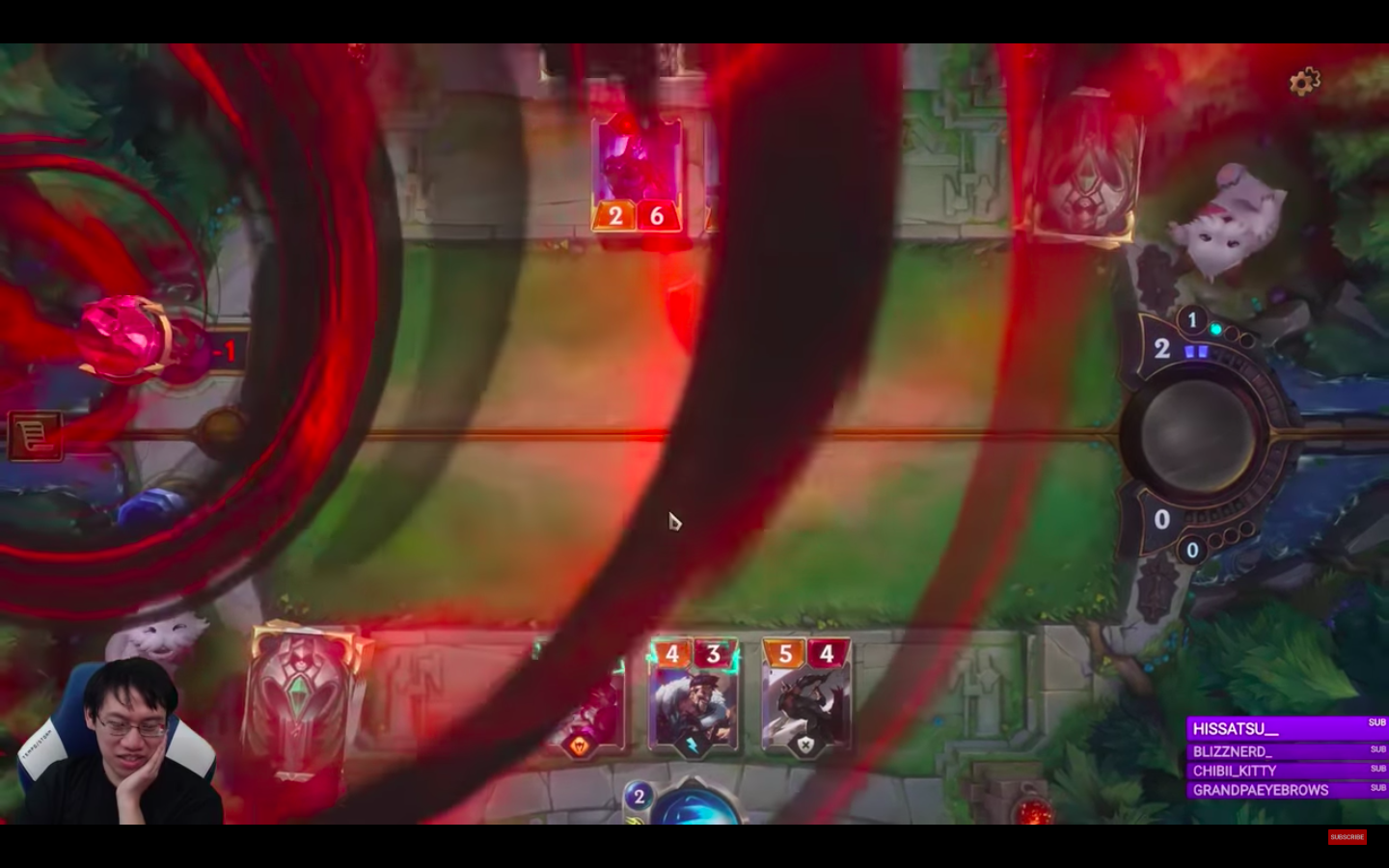

There are seven regions now, and more will be added in the future. The main deck building restriction in LoR is having cards from no more than two regions (like the five colors in MTG). This spell reaction and speed design goes well with the alternating actions design to create an interactive card game. Players can play as many spells as they want in response to a slow or fast spell (like “stack” in MTG and “chain” in Yu-Gi-Oh!). Burst spells can be played at any time, and it resolves immediately without necessarily passing the initiative to the opponent. A fast spell can be played like a slow spell, but it can also be used in response to a slow or fast spell (like instant in MTG). After a slow spell is cast, your opponent has an opportunity to react to it before it is resolved. Slow spells can only be played as an action when you have the initiative (like sorcery in MTG). Like Yu-Gi-Oh!, LoR has three different spell speeds: slow, fast, and burst. See the two vods below to learn more about this feature. Then, your plan to play reactively might unintentionally end the turn with you not spending the mana you have for that turn. However, if you use the pass button to pass your initiative, your opponent could end the turn by clicking the pass button too (i.e., two consequent passes would end a turn). You can do this by either making an action (e.g., summon an ally) or simply click the pass button (i.e., make no action). There are times when you want to pass the initiative to the opponent, so you could make the best reactive play after the opponent has made a move. If you summon a 3/3, the initiative is passed to the opponent who can then summon a 3/3 ally to block and kill your 2/2 ally if you attack with both of your allies. You can attack with the 2/2 ally for two damage, or summon a 3/3 ally and attack with both for five damage. For example, you have the attack token on turn three and 2/2 ally on the board, while the opponent has nothing on the board. This alternating action design adds enormous depth to the game without making it overly complicated. This is very different to most of the card games I have played, whereby a player normally has all the initiative in a turn. The player with the attack token at the start of the turn takes the first action of the turn and has the option to attack (an action). The other player can then take an action. Whenever a player makes an action (e.g., summon an ally, cast a spell), s/he passes the initiative to the other player. LoR addresses this issue with the spell mana system (see image below):īoth players get to play cards in every turn regardless of the attack token.

This often results in missing a “drop” in the first few turns to be a sizable disadvantage. This system obviously doesn’t have the land flood and land drought problems that we see in games like MTG and Pokemon, but it feels punishing when you do not spend your mana.

LoR uses a “no-land” mana system, whereby the players automatically get one additional mana each turn like in Hearthstone. At the same time, it is enjoyable and not overly complicated for casuals.Īll the features I’m mentioning below follow these few key design philosophies: “Skill above all” is one of the cornerstones of LoR, and their game design is well aligned with that. For example, random card effect outcome plays a very important role in Hearthstone, and it appeals more to the casuals than the competitive players. Games like this always face the challenge of balancing the interests of the competitive players and those of the casual players.


 0 kommentar(er)
0 kommentar(er)
